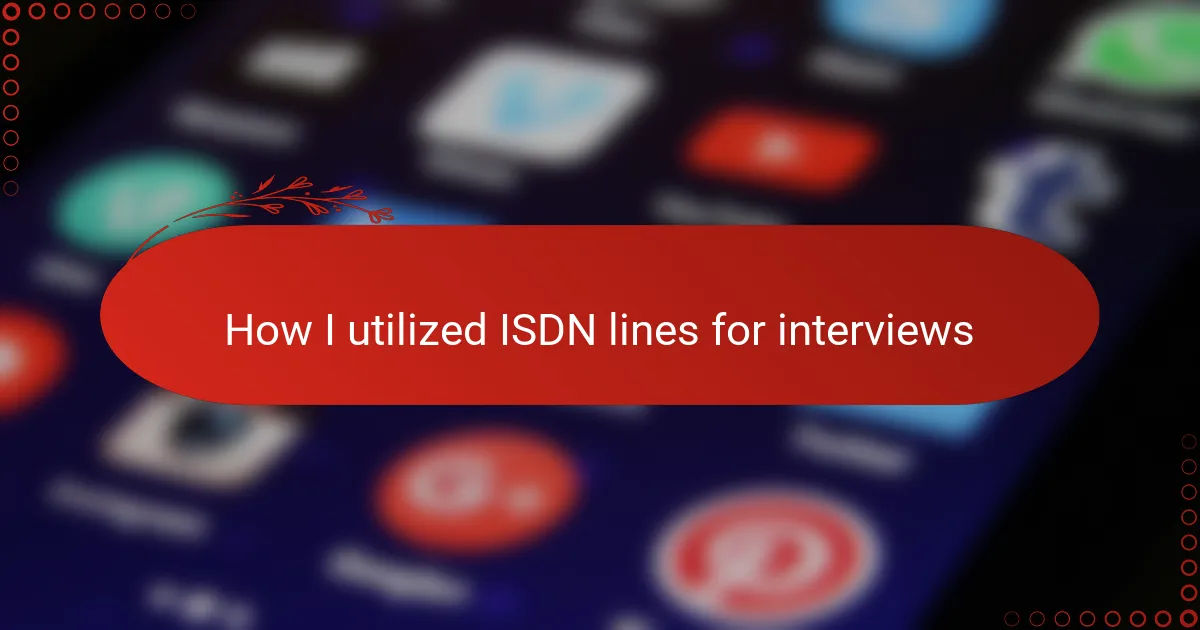Key takeaways
- ISDN lines provide superior audio clarity and low latency ideal for live broadcasting and interviews, enhancing the conversation flow and audience engagement.
- Reliable setups and thorough pre-interview sound checks are crucial to prevent technical issues such as dropouts and audio distortion.
- Using high-quality equipment, including ISDN terminal adapters and broadcast microphones, significantly improves audio quality and overall interview experience.
- Conducting regular tests and ensuring matched codec settings between studios can help maintain professional sound quality during ISDN interviews.
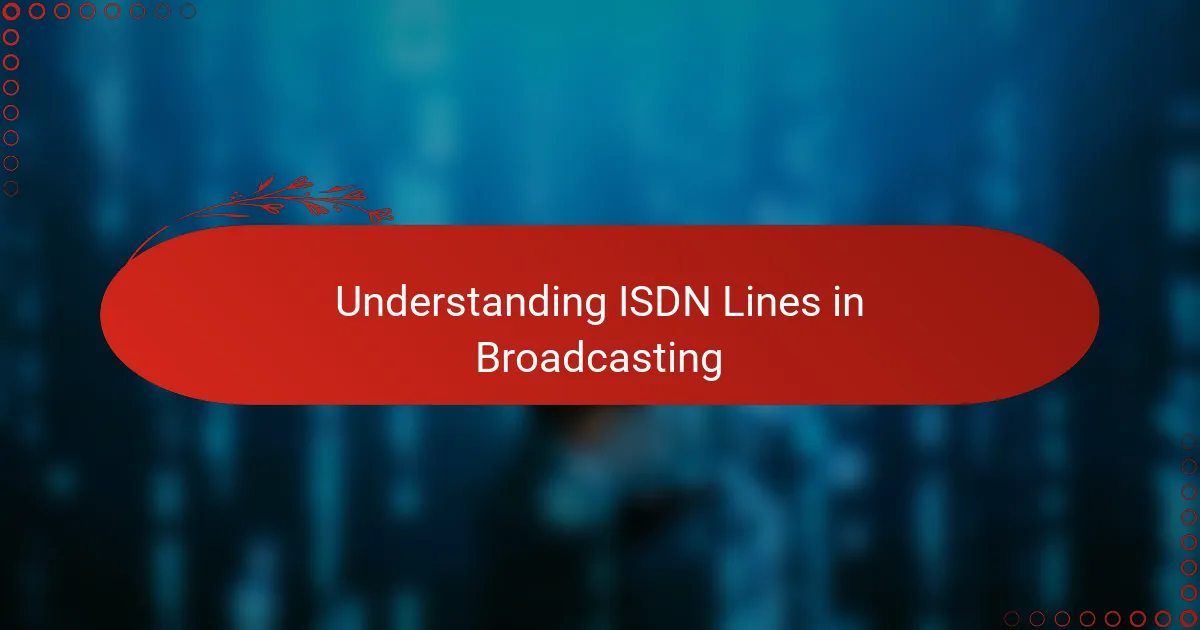
Understanding ISDN Lines in Broadcasting
ISDN lines have always struck me as a marvel of reliable technology in broadcasting. Unlike regular phone lines, they offer a digital connection that ensures crystal-clear audio quality, which is crucial during live interviews. Have you ever experienced that frustrating drop in sound or background noise during a remote guest’s segment? ISDN minimizes those issues significantly.
From my own experience, using ISDN lines transformed the way I handled remote interviews. The connection felt almost as if the guest was sitting right beside me in the studio. It wasn’t just about sound quality—it was about capturing the energy and spontaneity that makes radio so engaging.
What really fascinates me about ISDN is its ability to maintain low latency, meaning there’s minimal delay in conversations. When conducting live interviews, that split-second timing can make all the difference in maintaining smooth, natural dialogue. It’s a level of performance that, once you experience it, you can’t easily go back from.
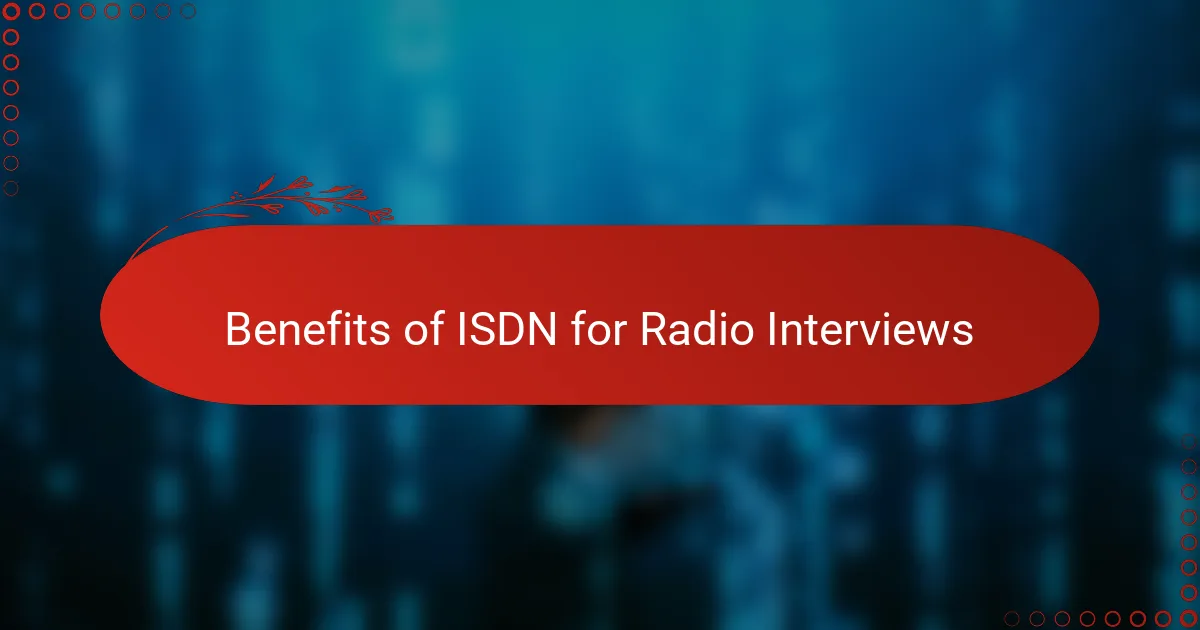
Benefits of ISDN for Radio Interviews
One of the biggest benefits I found with ISDN lines is the unmatched audio clarity during interviews. It’s incredible how a simple change in technology can make a guest’s voice come through so crisp and clear that you feel genuinely connected—even if they’re miles away. Have you ever tried to broadcast a voice muddled by static or echoes? ISDN spares you from that frustration, making every word count.
Another aspect I truly appreciate is the reliability. There’s a certain peace of mind that comes with knowing your connection won’t drop unexpectedly mid-interview. I recall a few tense moments before switching to ISDN, when a poor line almost derailed a discussion with an important guest. Since then, consistency has allowed me to focus on the conversation, not the tech headaches.
Latency is another game-changer I’ve noticed. Conversations flow naturally without that awkward pause you sometimes get with other setups. It’s these little details that keep interviews lively and spontaneous. When you’re live on air, that seamless interaction not only feels better but sounds better to your listeners too. Isn’t that what every broadcaster aims for?
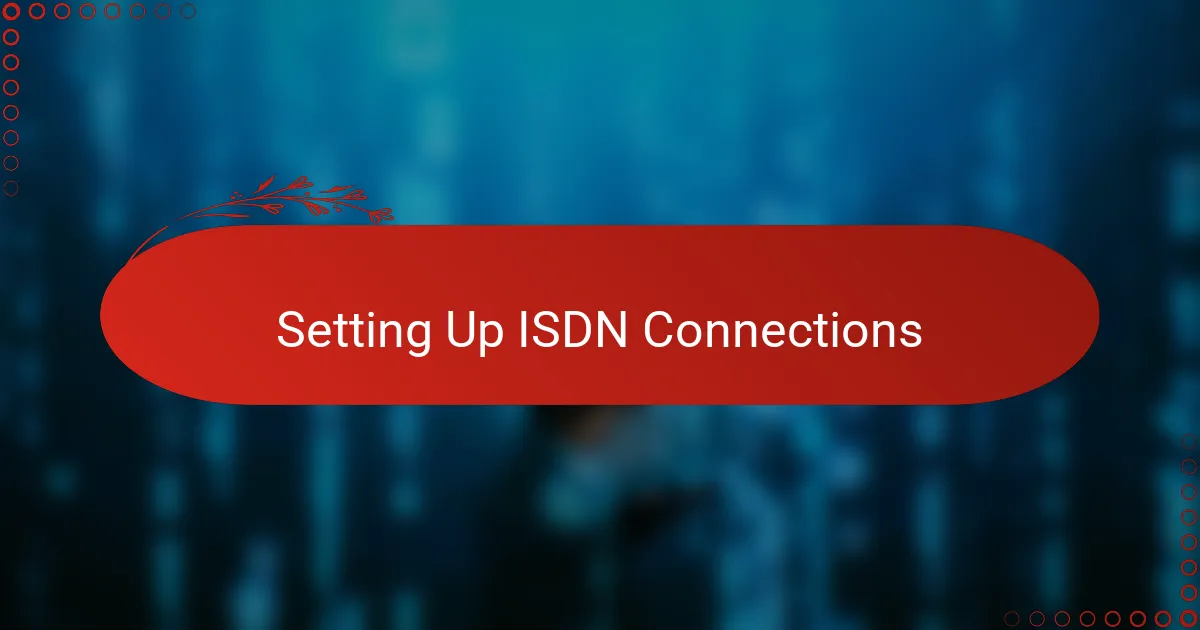
Setting Up ISDN Connections
Setting up ISDN connections has always felt a bit technical at first, but once I got into the rhythm, it became second nature. I remember the first time I hooked up an ISDN line—it required a bit of patience to configure the terminal adapter and make sure the codecs matched perfectly. It’s those little details that make all the difference in getting a smooth, uninterrupted audio feed.
Have you ever faced the frustration of a garbled line right before going live? I have, more times than I’d like to admit. What helped me was testing the connection thoroughly beforehand—running multiple sound checks and ensuring both ends were properly synchronized. This preparation gave me the confidence to dive into interviews without worrying about technical hiccups.
One thing I found surprisingly straightforward was integrating ISDN with the existing studio setup. Connecting the ISDN terminal adapter to the mixing console and assigning channels took some trial, but once done, the clarity and stability made every effort worthwhile. It’s amazing how investing time upfront in setting up can save you from headaches during those crucial live moments.
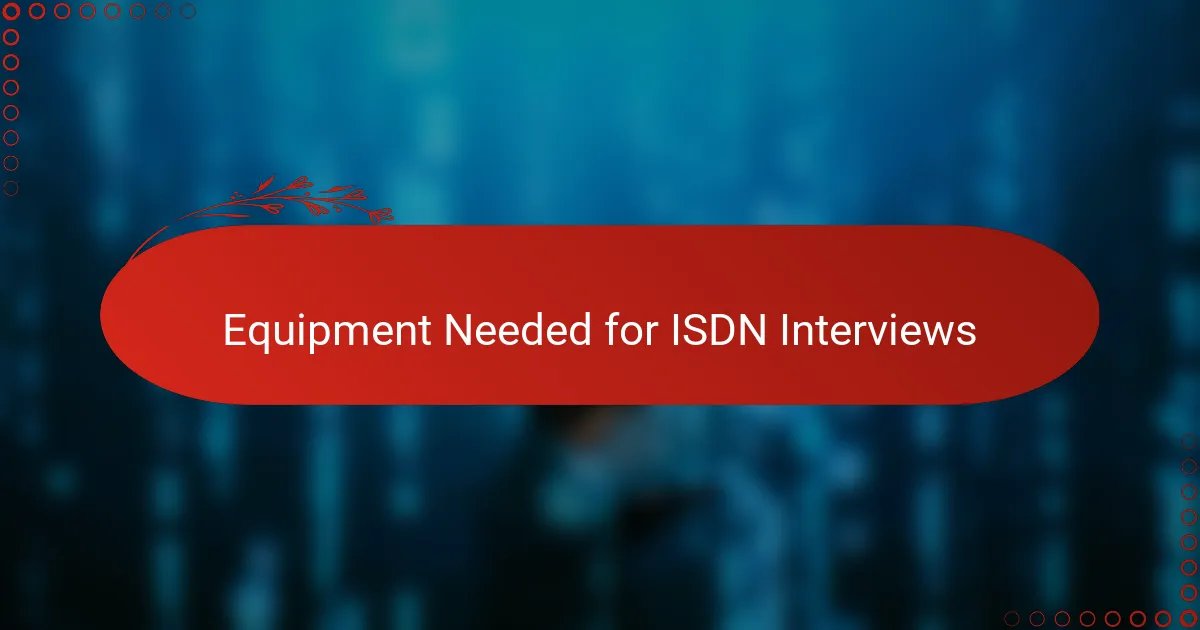
Equipment Needed for ISDN Interviews
When it comes to equipment for ISDN interviews, I’ve learned that having a reliable ISDN terminal adapter is absolutely essential. This device acts as the bridge between the digital ISDN line and your audio gear, ensuring the signal stays crisp and stable. Without it, even the best microphones can’t shine through the connection properly.
Choosing the right microphones and headphones also plays a huge role. I usually opt for broadcast-quality dynamic microphones because they capture voice nuances clearly while cutting out ambient noise. Over-ear headphones help monitor every detail in real time, letting me catch any minor glitches before they become a problem.
One time, I underestimated the importance of a good mixing console, and the difference was night and day once I upgraded. Having a mixer that can handle multiple inputs and provide instant control over audio levels gave me the flexibility I needed to balance the guest’s voice perfectly. Have you ever struggled to adjust volume with limited gear? That hands-on control makes all the difference during a live session.
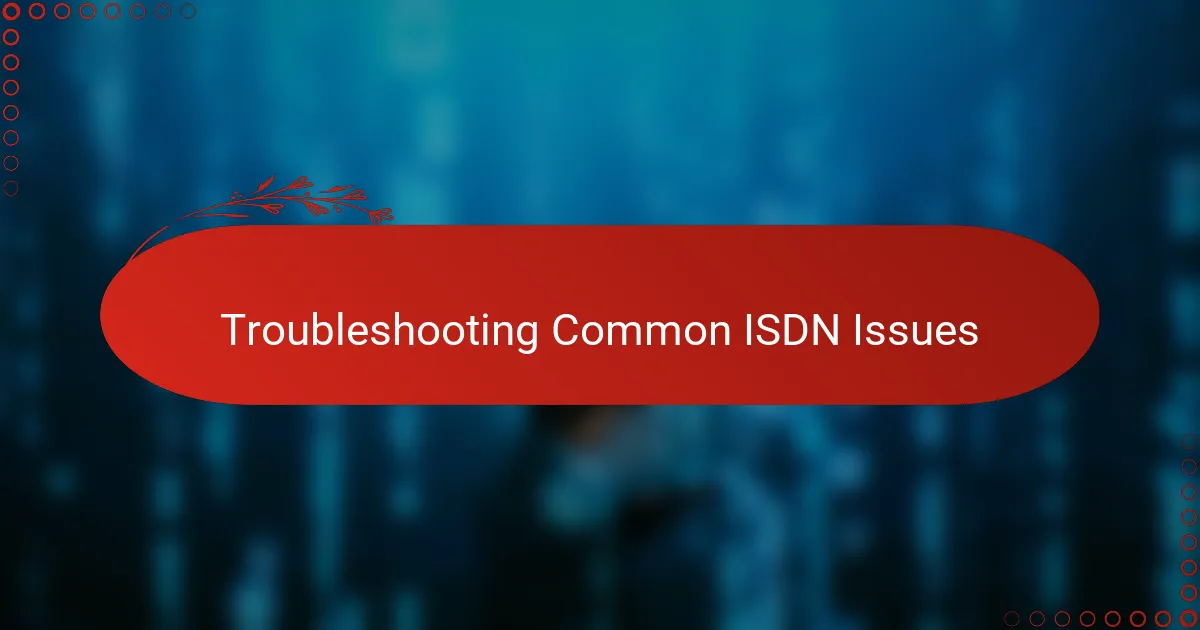
Troubleshooting Common ISDN Issues
One common issue I’ve run into with ISDN lines is unexpected dropouts during an interview. It’s frustrating, especially when everything seems set up correctly. What helped me was double-checking all cable connections and restarting the terminal adapter—it’s surprising how often a simple reset fixes the glitch.
Another challenge that caught me off guard was audio distortion caused by mismatched codecs between studios. Have you ever wondered why the sound suddenly goes fuzzy or robotic? Ensuring both ends use the same codec settings made a huge difference in maintaining that clear, professional audio we all strive for.
Occasionally, I noticed delays creeping into the conversation, even though ISDN is supposed to keep latency low. In those moments, I found that network congestion or poor line quality was usually the culprit. Running pre-interview line tests became my go-to practice—it gave me peace of mind knowing the connection was stable before going live.
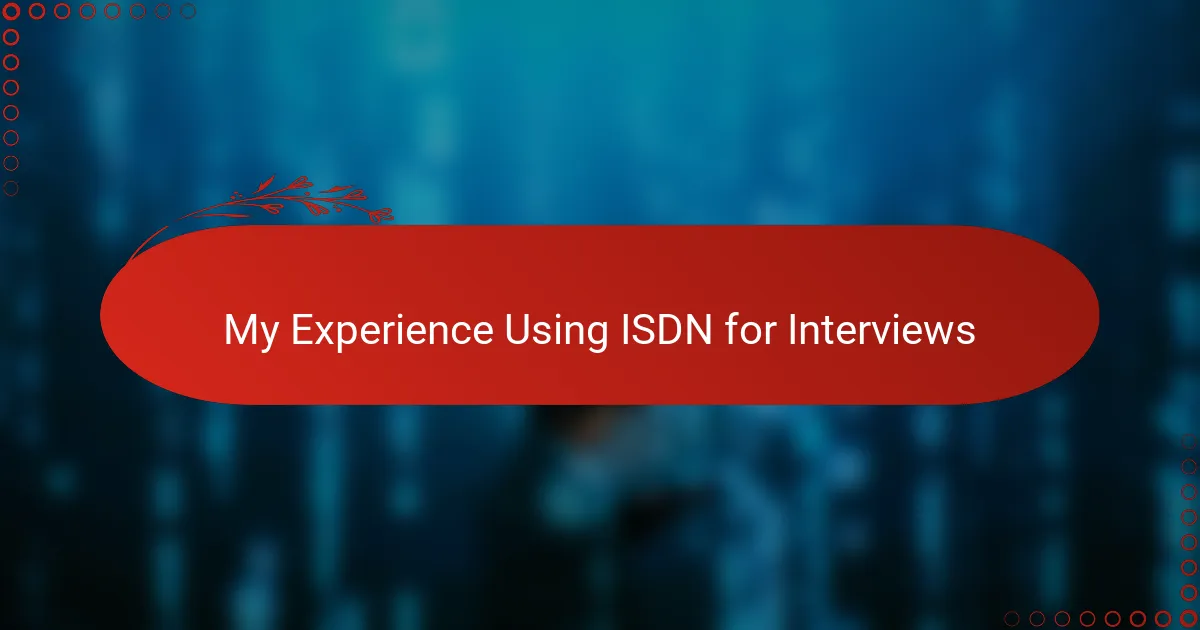
My Experience Using ISDN for Interviews
Using ISDN lines for interviews was a game-changer in my broadcasting career. I remember my first live remote session—there was this comfort in hearing the guest’s voice so clear and immediate, it almost erased the miles between us. Have you ever sat through an interview where lag or static kills the vibe? With ISDN, those worries faded quickly.
What really struck me was how natural conversations felt. There was none of that awkward pause or “overlapping talk” that you often get with phone or even some IP lines. It felt like we were in the same room, exchanging thoughts effortlessly. I found myself focusing more on the content and less on whether the connection would hold up.
Of course, it wasn’t all smooth sailing from the start. I recall a few tense moments trying to get codec settings right; a mismatch turned a smooth voice into a distorted mess. But once I nailed the setup, the difference was unmistakable. That reliability made me confident to book even the most high-profile interviews without sweating technical glitches.
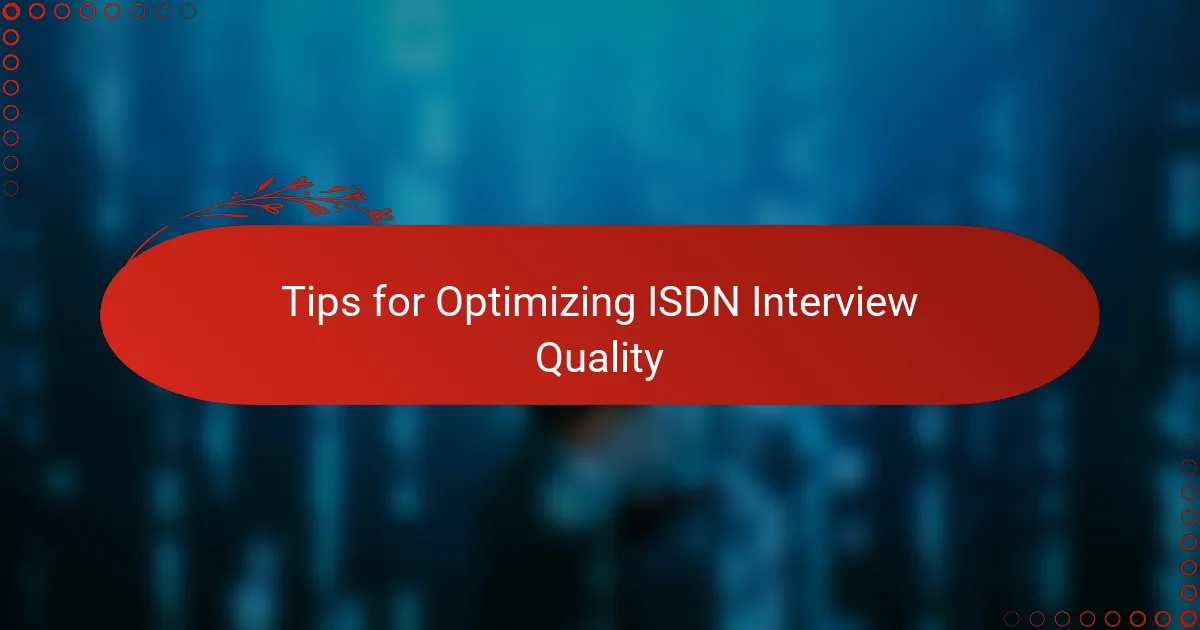
Tips for Optimizing ISDN Interview Quality
One tip I can’t emphasize enough is running thorough sound checks before going live. Have you ever been mid-interview and suddenly noticed a crackle or drop in audio? A quick pre-session test helps catch those issues early, saving you from scrambling during the broadcast. From my experience, that peace of mind boosts confidence and lets the conversation flow naturally.
Another key is matching codec settings perfectly on both ends. I once had a situation where the guest’s voice sounded robotic and distorted, and it took a while to figure out the codec mismatch was the culprit. Getting those settings aligned right away makes a world of difference in maintaining that crisp, professional sound listeners expect.
Finally, keep your equipment connections tight and stable. I remember a tense moment when a loose cable caused a brief dropout right before airtime. Since then, I double-check every connection and give the terminal adapter a quick reboot if something feels off. These small habits turned out to be invaluable for delivering seamless, high-quality ISDN interviews every time.
